
Predicting the Woman Hairstyles of the Future: 7 Trends Shaping the Next Decade | Tech & Sustainability
12 min read

12 min read

12 min read

14 min read
Download our app to instantly see how you'd look with any hairstyle or color
Get the App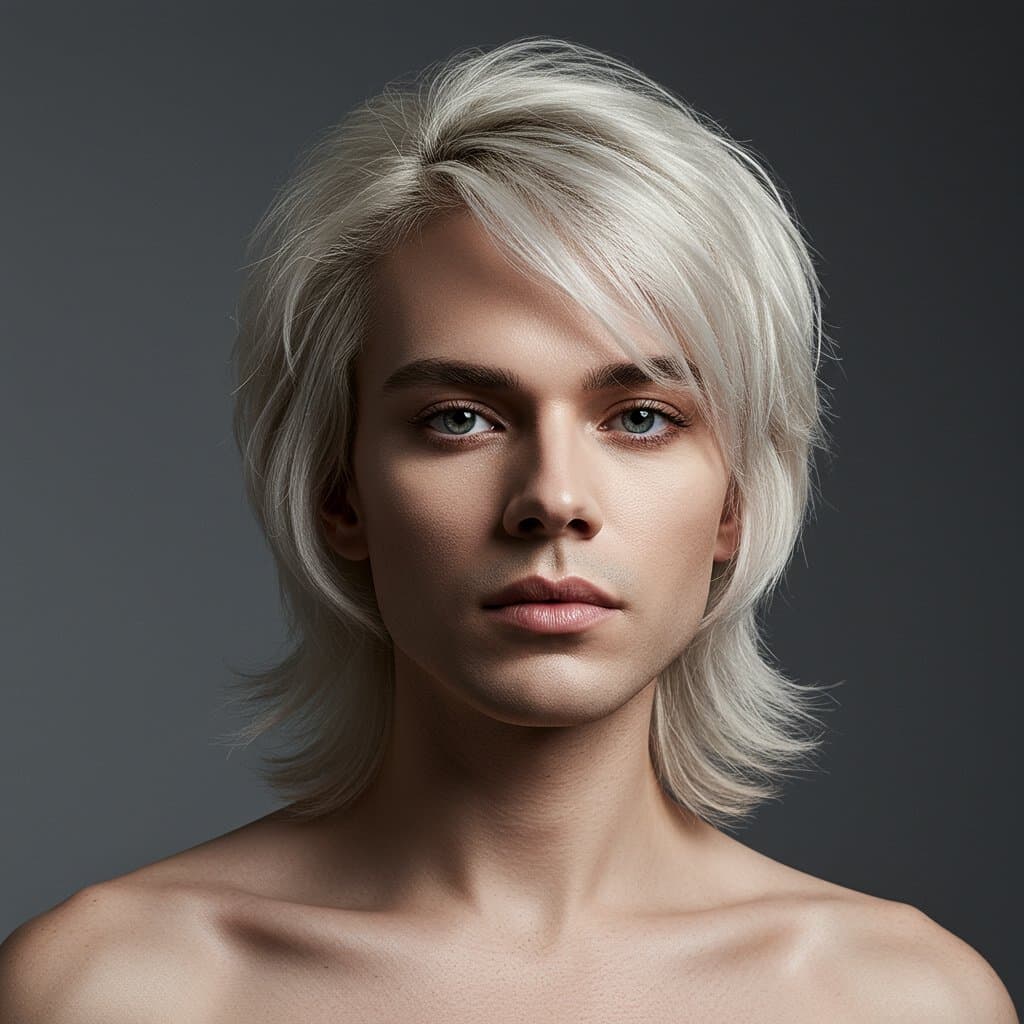
13 min read

13 min read

16 min read
Download our app to instantly see how you'd look with any hairstyle or color
Get the AppSplit ends are a universal hair concern, a frustrating signal that our hair has reached its breaking point—literally. That tell-tale fraying at the tips of our hair strands can make even the most beautifully styled hair look dull, dry, and unkempt. But what exactly is happening when a hair splits, and why does it seem like an endless battle for so many? The answer lies not in magic potions, but in understanding the fundamental science of hair structure and the various stressors it endures daily. This comprehensive guide will delve into the science of split ends, scientifically known as trichoptilosis, to give you a clear picture of what causes them and, more importantly, how to effectively treat and prevent them for healthier, stronger hair.
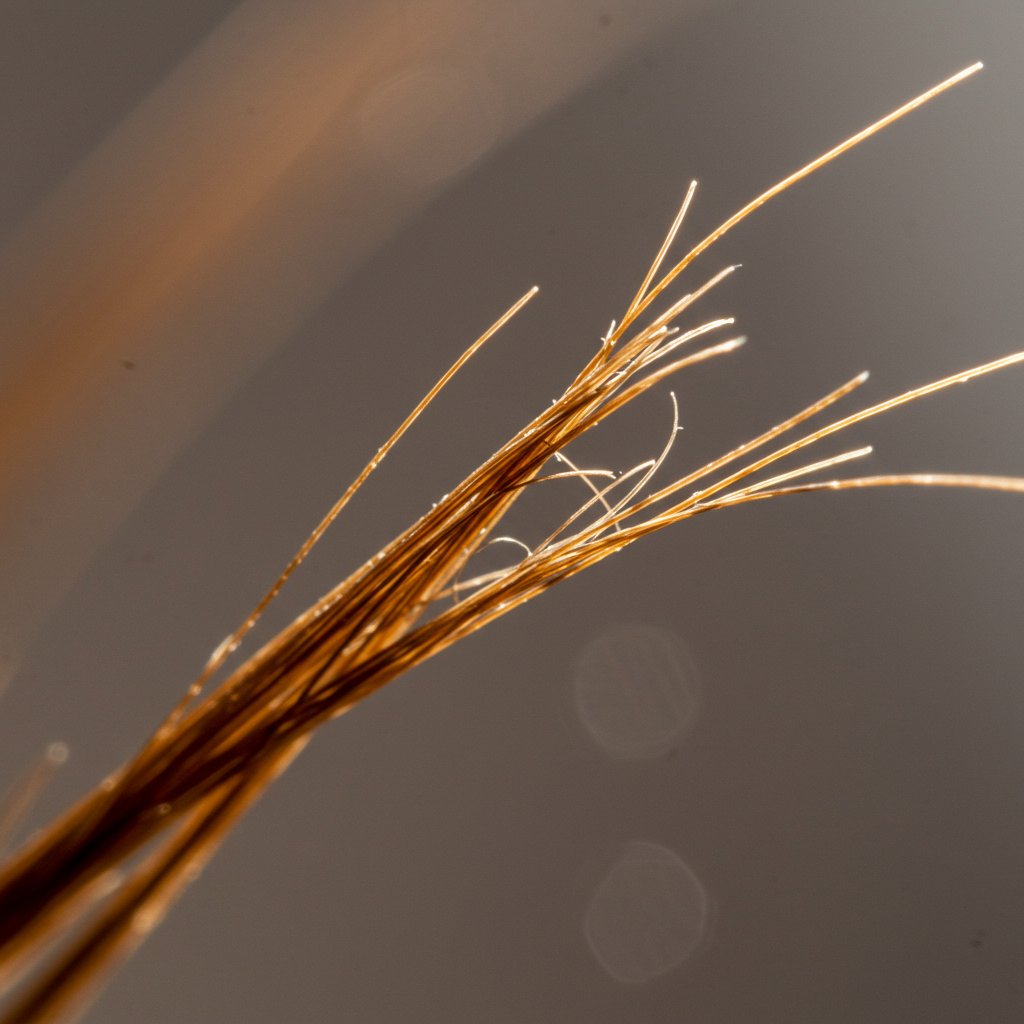
Understanding the root cause of split ends is the first step toward achieving the lustrous hair you desire. It’s more than just a cosmetic issue; it’s a sign of damage to the very core of the hair fiber. We will explore the intricate anatomy of a hair strand, dissect the mechanical, thermal, and chemical culprits behind the damage, and debunk common myths about repairing frayed ends. By the end of this article, you'll be equipped with the scientific knowledge and practical strategies needed to protect your hair, minimize damage, and maintain its integrity from root to tip. Prepare to transform your approach to hair care from reactive repair to proactive prevention.
To understand why hair splits, we must first understand its structure. Each hair strand is composed of three primary layers. The innermost layer is the medulla, a soft, spongy core that isn't always present, especially in fine hair. Surrounding it is the cortex, which makes up the bulk of the hair fiber. The cortex is comprised of long keratin protein chains, and it's responsible for your hair's strength, elasticity, and color. The outermost layer is the cuticle, a series of overlapping, scale-like cells that act as a protective shield for the delicate cortex within. When hair is healthy, these cuticle scales lie flat, giving hair a smooth, shiny appearance and protecting the inner layers from damage.
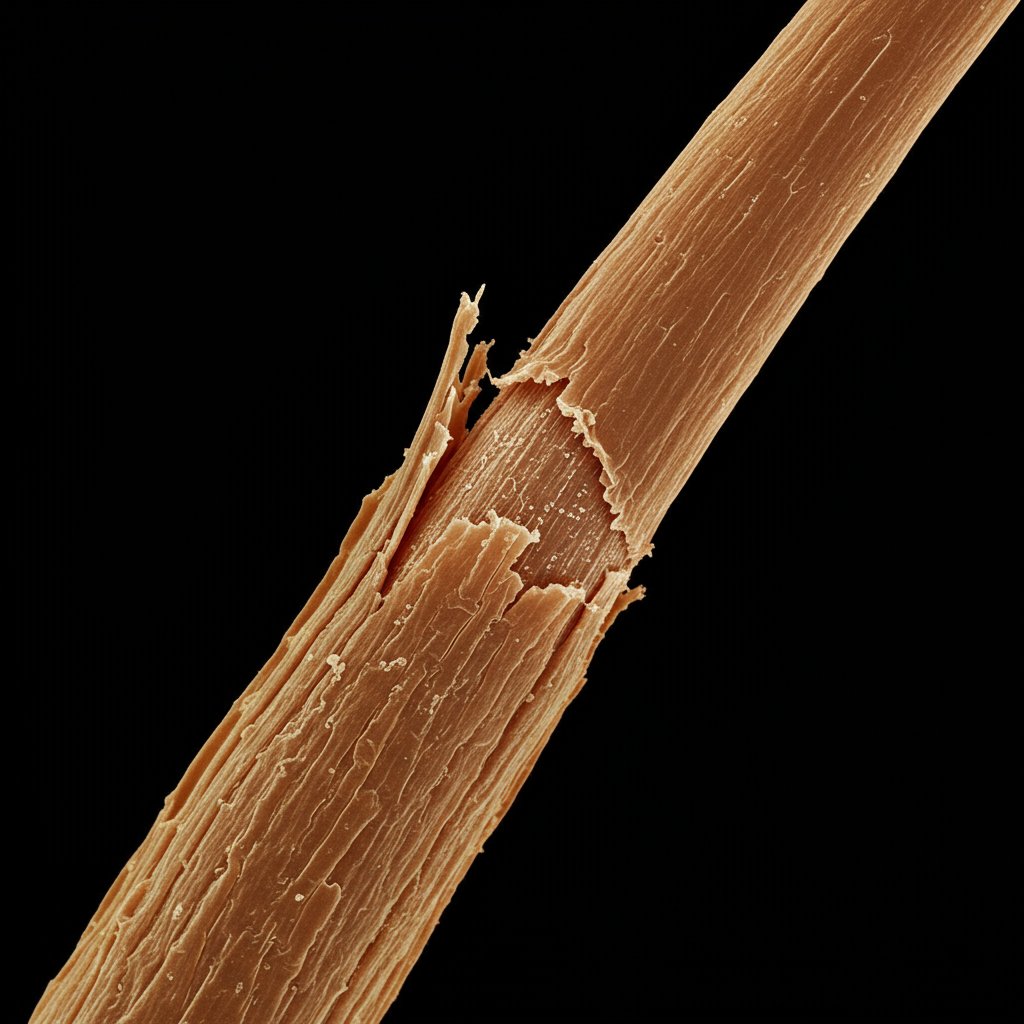
Trichoptilosis, or the splitting of hair, occurs when this protective cuticle layer is worn away or eroded from the tip of the hair shaft. Without the cuticle's binding protection, the fibrous proteins of the cortex unravel and fray, much like the end of a rope. This doesn't just happen in one way; split ends can manifest as a simple two-strand split, a more complex 'tree' or 'feather' split with multiple fractures, or even tiny 'white dots' that indicate a point of fracture about to happen. This breakdown is a direct result of cumulative damage that weakens the hair's structure over time.
The tips of your hair are the oldest and most fragile part of the strand. They have endured years of washing, styling, and environmental exposure. Each of these actions contributes to the gradual erosion of the cuticle. Once that protective layer is compromised at the ends, the cortex is left exposed and vulnerable, leading inevitably to the fraying and splitting that we recognize as split ends. This microscopic breakdown is the foundation of all our hair-end woes.
One of the most significant contributors to split ends is everyday mechanical stress. This physical wear and tear may seem harmless on a daily basis, but its cumulative effect is a major cause of cuticle erosion. Aggressive brushing or combing is a prime offender. When you force a brush through tangled hair, especially when it's wet and at its most fragile state, you are physically ripping and stretching the hair fibers beyond their elastic limit. This causes the cuticle scales to lift, crack, and eventually break off, paving the way for split ends. Using brushes with harsh bristles or broken teeth can exacerbate this damage, acting like tiny razors against the hair shaft.
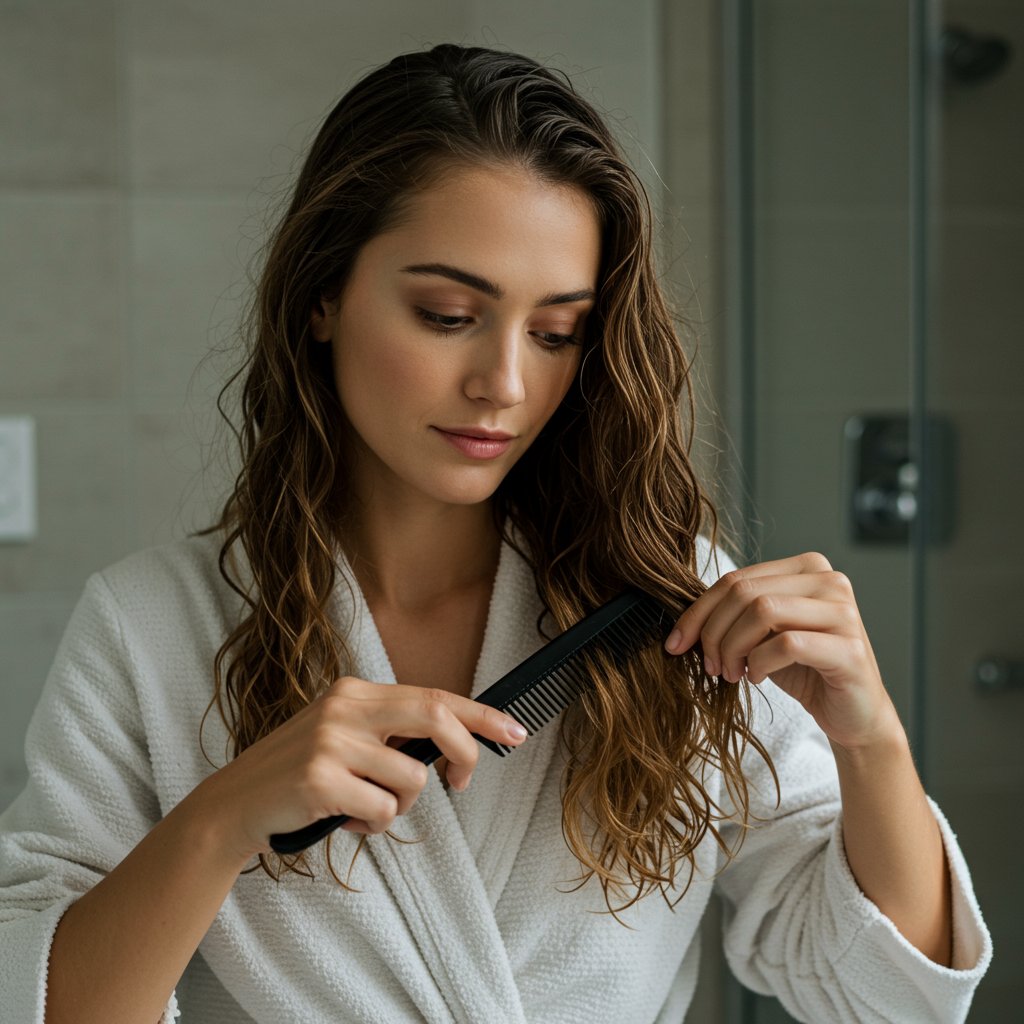
Friction is another silent enemy of healthy hair. Simply drying your hair with a rough cotton towel can create enough friction to lift and damage the cuticle. The rubbing motion roughs up the hair's surface, leading to frizz and weakness over time. Similarly, sleeping on cotton pillowcases can cause friction as you toss and turn, snagging and pulling at your hair strands all night. Even your hairstyle choices can be a source of mechanical damage. Tight ponytails, buns, or braids that pull on the hair shaft create constant tension, which can weaken the fiber over its entire length. The use of harsh hair elastics with metal components can also create specific friction points that lead to breakage and splits.
To mitigate this damage, a gentle approach is crucial. Always detangle hair starting from the ends and working your way up to the roots using a wide-tooth comb or your fingers. Swap your rough cotton towel for a soft microfiber towel or an old t-shirt and gently squeeze or blot water out instead of rubbing. Consider switching to a silk or satin pillowcase to reduce overnight friction. When styling, opt for looser styles and use hair-friendly accessories like scrunchies or seamless elastics to minimize stress and breakage.
Heat styling tools like flat irons, curling wands, and blow dryers are staples in many beauty routines, but their high temperatures are a direct route to severe hair damage and split ends. When you apply intense heat to your hair, it causes rapid water loss from within the cortex. This isn't just surface moisture; it's the internal water molecules that help keep the hair's protein structure pliable and healthy. When this water is heated to boiling point (100°C / 212°F), it can create steam-filled bubbles inside the hair shaft, a phenomenon known as 'bubble hair,' which leads to weak spots and breakage.
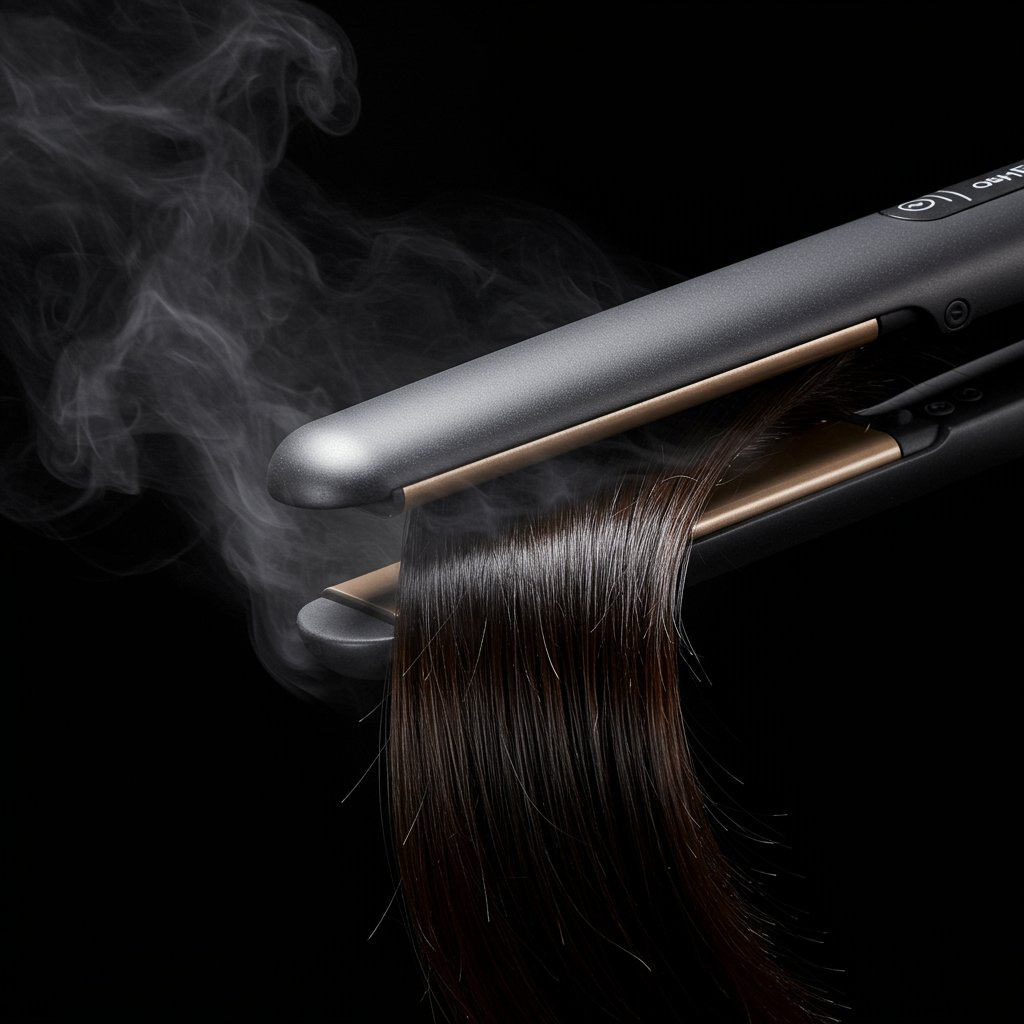
Furthermore, temperatures exceeding 200°C (392°F) can permanently degrade the keratin proteins that give hair its strength. This process, known as protein denaturation, melts and alters the hair's fundamental structure, making it brittle, inelastic, and extremely prone to splitting. The intense, direct heat from a flat iron or curling wand literally cooks the hair fiber, while the high-velocity hot air from a blow dryer can blast the cuticle scales open, leaving the cortex exposed and vulnerable. Over time, this repeated thermal stress creates micro-cracks along the hair shaft that grow larger with each styling session, eventually resulting in full-blown split ends.
Protecting your hair from thermal damage is non-negotiable if you use heat tools. The most important step is to always apply a high-quality heat protectant spray or serum before styling. These products create a protective barrier on the hair's surface, helping to distribute heat more evenly and slow down water loss. It's also vital to use the lowest effective temperature setting on your tools for your hair type and to never use them on damp hair, which is much more susceptible to steam damage. Reducing the frequency of heat styling and allowing your hair to air-dry whenever possible will give it a much-needed break to maintain its structural integrity.
Chemical processes like coloring, bleaching, perming, and straightening can deliver dramatic results, but they do so by fundamentally altering the hair's internal structure, significantly increasing its vulnerability to damage. These treatments rely on strong chemicals, such as ammonia and peroxide, to lift the hair's cuticle and penetrate the cortex. Bleaching, for instance, is a highly oxidative process that dissolves the natural melanin pigments in the cortex to lighten the hair. While effective, this process also breaks down the hair's natural fatty acids and weakens the disulfide bonds within the keratin proteins, which are crucial for the hair's strength and elasticity.
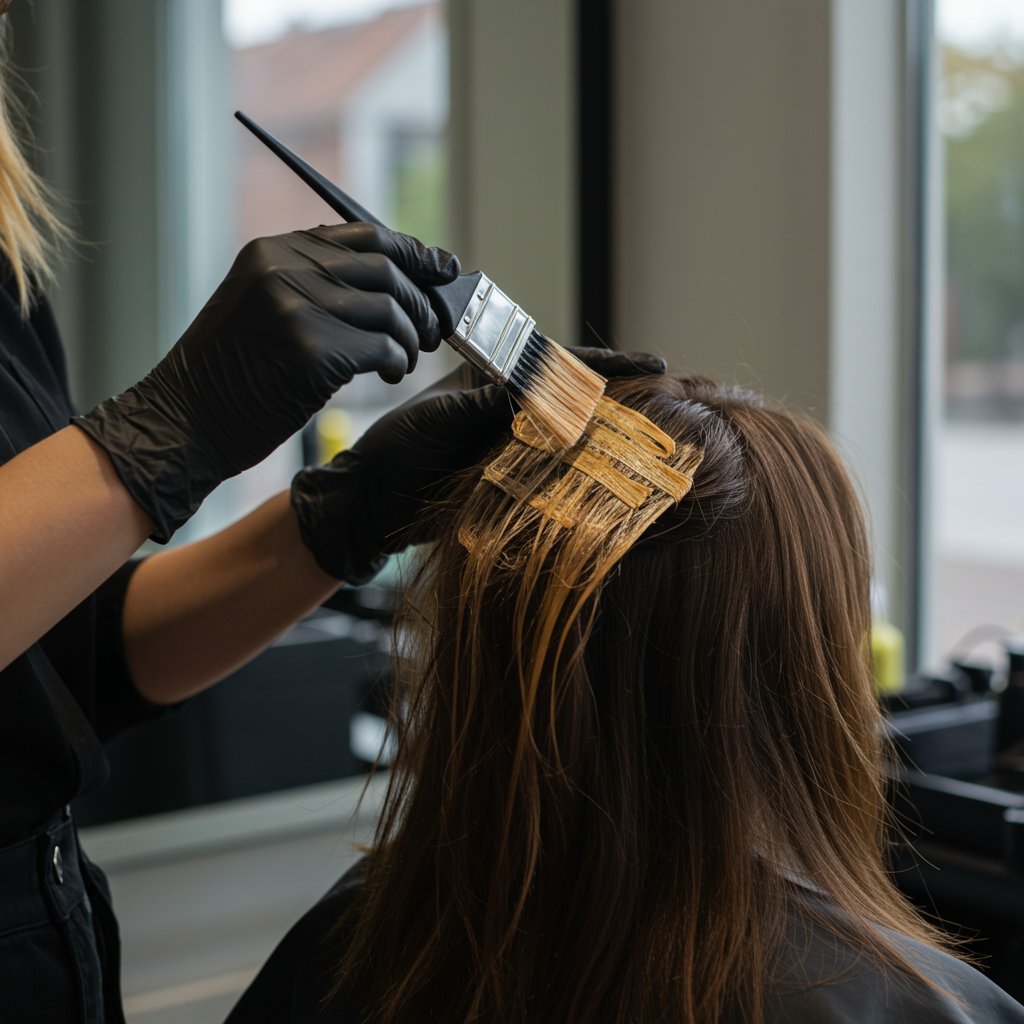
Similarly, permanent hair color uses ammonia to swell the hair shaft and open the cuticle, allowing color molecules to enter the cortex. Perms and relaxers work by breaking and then reforming these disulfide bonds to reshape the hair into a curly or straight texture. While these processes achieve the desired aesthetic, the act of forcibly opening the cuticle and altering the hair's chemical makeup leaves the hair in a permanently more fragile and porous state. A lifted, damaged cuticle is less effective at protecting the cortex, making the hair more susceptible to moisture loss, friction, and ultimately, splitting.
If you choose to chemically treat your hair, aftercare is paramount to minimizing damage. Using color-safe, sulfate-free shampoos and conditioners can help prevent further stripping of the hair's natural oils. Regular deep conditioning treatments and protein masks are essential to replenish lost moisture and temporarily patch the gaps in the hair's structure. Professional in-salon bonding treatments can also work wonders by helping to relink the broken disulfide bonds within the hair, improving its strength and resilience post-service. Consulting with an experienced stylist is key; they can assess your hair's condition and formulate a treatment plan that minimizes damage while achieving your desired look.
While we have a degree of control over mechanical, thermal, and chemical damage, other factors that contribute to split ends are less avoidable. Environmental stressors play a significant role in the health of our hair. Chronic exposure to the sun's ultraviolet (UV) rays can have an effect similar to bleach, degrading the hair's proteins and pigments. UV radiation breaks down the bonds in keratin and damages the cuticle, leading to discoloration, brittleness, and a much higher likelihood of splitting. Just as we protect our skin, our hair needs protection from the sun, especially during peak hours.

Other environmental elements also take their toll. Pollution, dry air, and hard water can all negatively impact hair health. Airborne pollutants can settle on the hair, creating a film that dulls its appearance and can lead to oxidative stress. Low humidity can leech moisture from the hair, leaving it dry and brittle, while high humidity can cause the hair shaft to swell, lifting the cuticle and increasing friction between strands. Even internal factors, such as diet and hydration, are critical. Hair is built from the nutrients we consume, so a diet lacking in essential proteins, vitamins (like biotin and vitamin E), and minerals (like iron and zinc) can result in weaker, more damage-prone hair being formed at the root.
To combat these factors, a holistic approach is needed. Protect your hair from the sun by wearing a hat or using UV-protectant hair products. In dry climates, use hydrating leave-in conditioners and oils to seal in moisture. A clarifying shampoo can help remove buildup from pollution and hard water. Internally, ensure you are eating a balanced diet rich in lean proteins, fruits, vegetables, and healthy fats. Staying well-hydrated by drinking plenty of water is also fundamental, as it supports overall health, which is reflected in the quality and strength of your hair.
One of the most pervasive myths in the hair care industry is the idea that split ends can be permanently 'mended' or 'repaired' by a product. It's crucial to understand the science here: once the hair shaft has physically split, there is no way to fuse it back together permanently. The hair fiber is not living tissue like skin, so it cannot heal itself. The products marketed as 'split end menders' or 'repair serums' work by using ingredients like silicones, polymers, or proteins to temporarily glue or bind the frayed ends together. This can improve the hair's appearance and feel, reduce the visibility of splits, and prevent them from tangling, but it is purely a cosmetic, temporary fix. As soon as the hair is washed, the effect is gone.
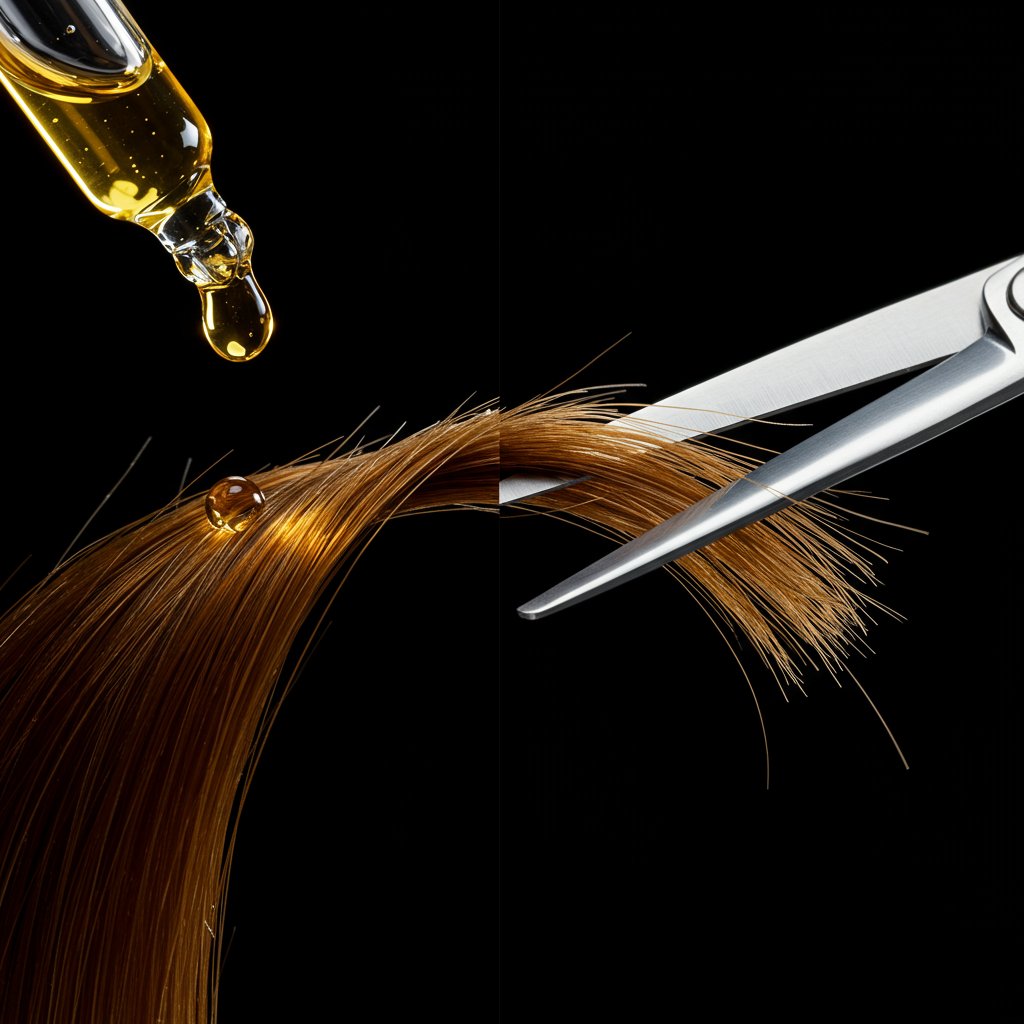
These products can be beneficial as a short-term solution to improve manageability and protect the hair from further splitting while you wait for your next haircut. They coat the hair shaft, smoothing down the roughed-up cuticle and filling in gaps, which can reduce friction and prevent a small split from traveling further up the hair shaft before it can be removed. However, relying on these products as a long-term solution is ineffective. The underlying damage is still there, and without proper removal, the split can continue to travel upwards, leading to more extensive breakage and requiring more length to be cut off in the long run.
The only true, permanent solution for split ends is to cut them off. This is why regular trims are so vital to maintaining hair health. By snipping off the damaged ends, you remove the frayed parts of the fiber and prevent the split from worsening. This is not a failure of hair care, but a fundamental and necessary part of a healthy hair maintenance routine. Accepting this fact allows you to shift your focus from a futile search for a miracle 'repair' product to the much more effective strategy of proactive prevention and regular maintenance.
The most effective strategy against split ends is a two-pronged approach: professionally removing existing damage and implementing a consistent routine to prevent new damage from occurring. This is where the expertise of a professional stylist becomes invaluable.
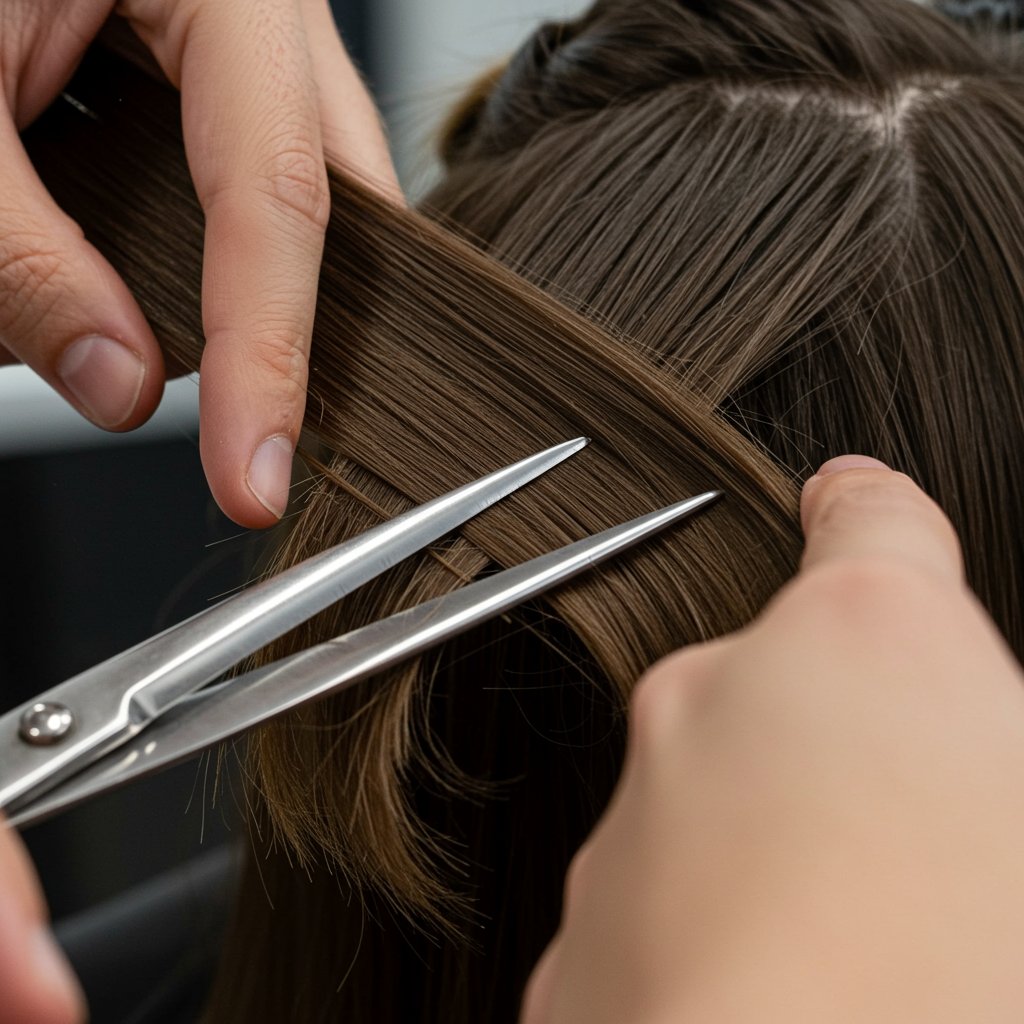

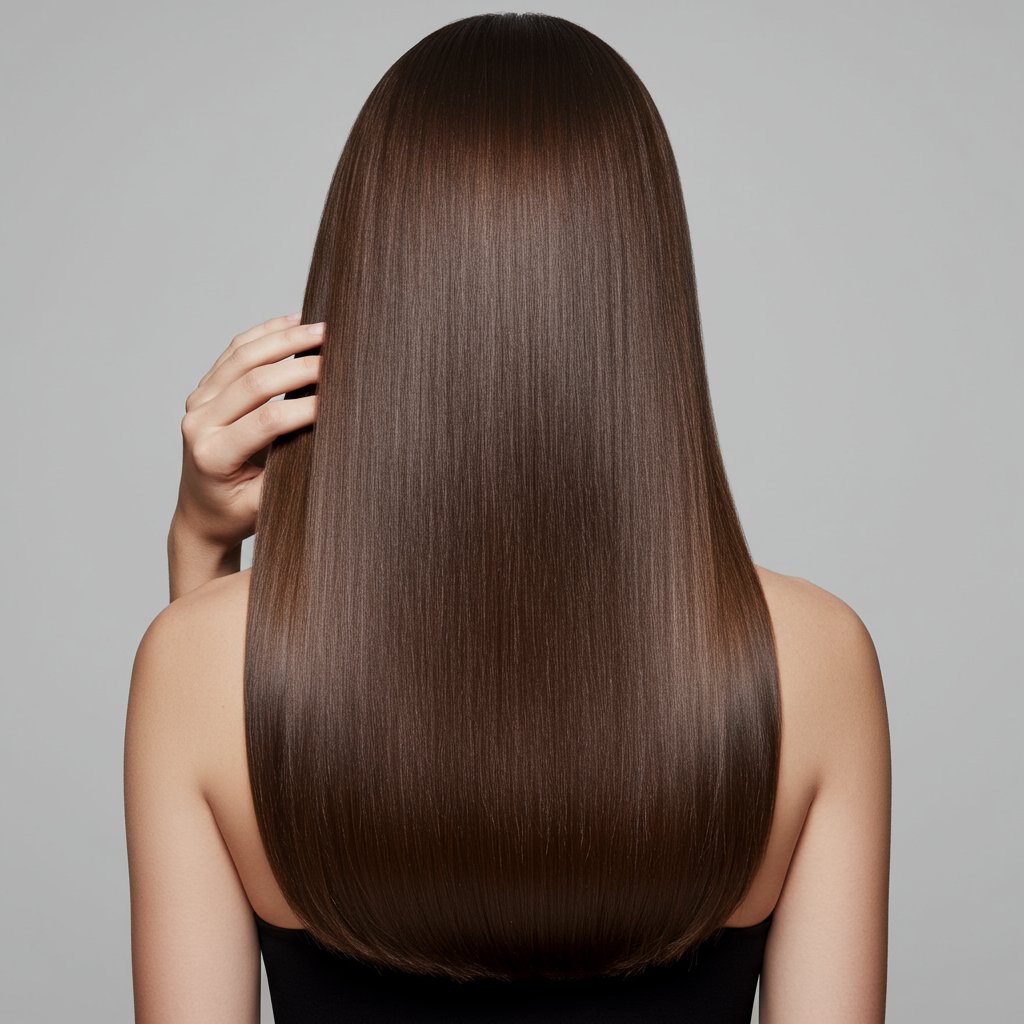
Understanding the science of split ends empowers you to move beyond temporary fixes and tackle the problem at its source. Trichoptilosis is not a sign of poor hygiene, but rather the cumulative result of stress on the hair fiber's structure. By recognizing the impact of mechanical, thermal, and chemical damage, and by respecting the delicate nature of the hair's cuticle, you can fundamentally change the health of your hair. The journey to split-end-free hair is not about finding a single miracle product, but about building a consistent, gentle, and protective care routine.
Embrace the power of prevention. Invest in gentle tools, protect your hair from heat and environmental stressors, and nourish it from the inside out. Most importantly, build a relationship with a trusted hair stylist who can help you maintain your hair's health with regular, professional trims. By cutting away the damage and protecting the healthy hair that remains, you create a sustainable path to achieving the strong, smooth, and resilient hair you've always wanted. Healthy hair is a journey, and with this scientific knowledge, you are now perfectly equipped to navigate it with confidence.
Download our app to instantly see how you'd look with any hairstyle or color
Get the App
12 min read

12 min read

14 min read